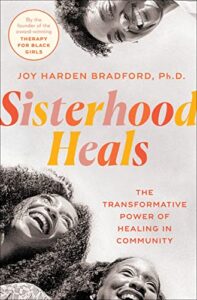When you think about Black sisterhood, what comes to mind? For me, I begin with my close-knit group of friends and then I think about my mother and aunts. I have a very clear memory of what it was like to sit around, hear them talk, and be in community with each other.
At family functions they would gather around and catch each other up on the latest news with their jobs, and then it would trickle down into family news. And if us kids were lucky, we’d find out if we were all going to Six Flags Great Adventure in the summer.
But it was something about the way they took care of each other that always stuck with me. I noticed which aunt took the lead in planning trips, which aunt planned family dinners, and of course which aunt was going to vouch for me when I wanted to do something “grown.”
There was always a language being spoken underneath the verbal communication that I became fluent in because I studied them. The head nods, eye rolls, brow lifts, lip curls, and even the famous side-eye all meant something.
I treasure Black sisterhood; I feel seen and heard when I’m with other Black women. In order to maintain healthy friendship dynamics and sisterhood in different spaces we need ways to communicate and acknowledge each other’s grievances without harsh reactions.
Dr. Joy Harden Bradford is a licensed Psychologist, and the host of the wildly popular, award-winning mental health podcast Therapy for Black Girls. Her work focuses on making mental health topics more relevant and accessible for Black women, and she delights in using pop culture to illustrate psychological concepts.
And with her new book Sisterhood Heals: The Transformative Power of Healing in Community Bradford has added author to her resume. Sisterhood Heals is a love offering to Black women everywhere. It’s the book you give to your bestie, favorite co-worker, aunt, and even the ladies at the church who only read books by Sarah Jakes…lol.
I interviewed Dr. Bradford right before the release of her book and we dived into as many topics as we could cover. Listen below to the full interview…




